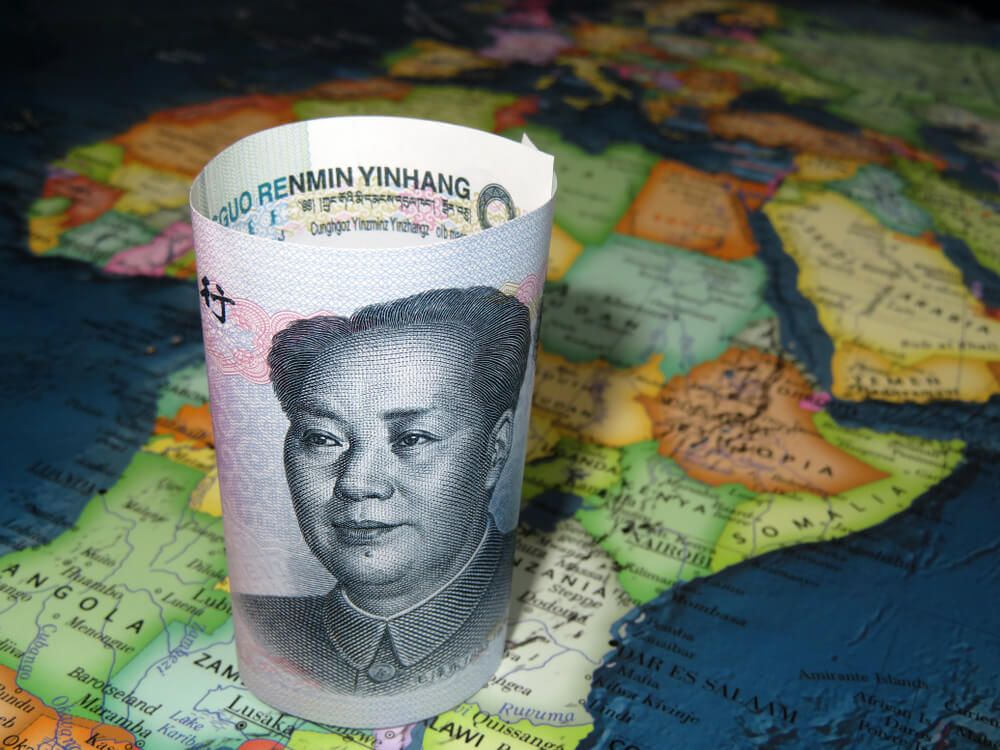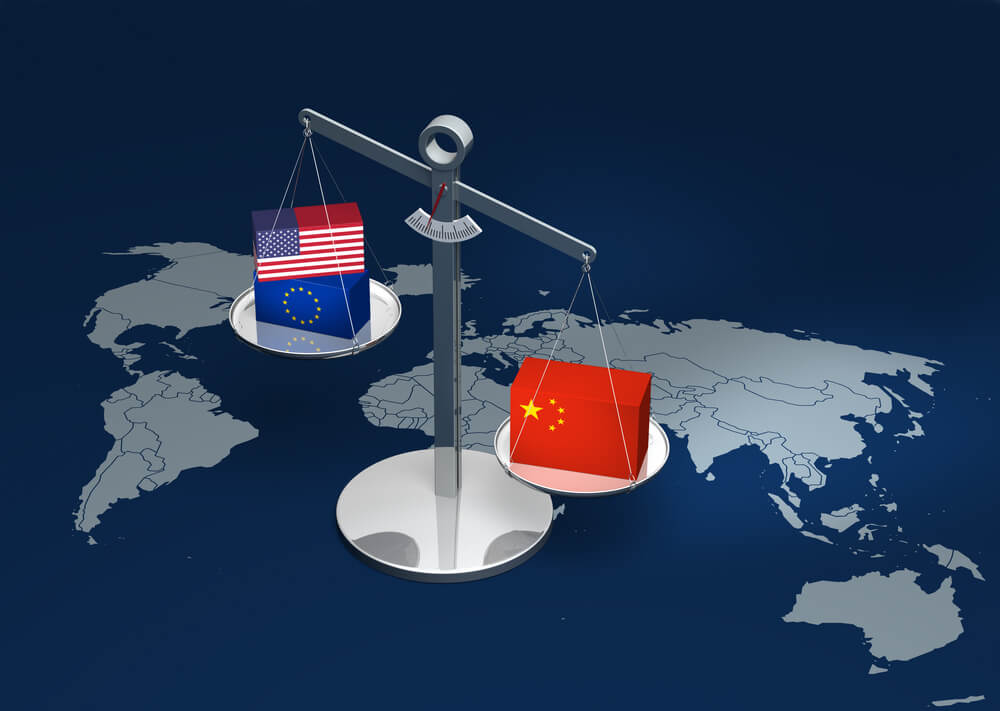Over the last decade, China’s precipitous rise in a several digital fields has challenged the United States’ long-established dominance in this sector. Between 2011 and 2021, Chinese software exports almost doubled, from $34.6 billion to $63 billion. A market capitalization analysis shows that American internet companies easily have the edge in terms of aggregate value, but that five of the world’s ten largest companies by market cap are Chinese.
Market capitalization, in billion USD, June 2022

Source: Statista. In blue: American companies; in red: Chinese companies.
Another indicator of the challenger’s success came in early 2023: Chinese apps (Temu, TikTok, CapCut, and Shein) took the top four spots in the download rankings on the Google Play Store and Apple’s App Store in the United States. The video-sharing app TikTok (owned by ByteDance) is particularly popular, used by two-thirds of American teenagers.
Moreover, the global influence of Chinese firms is growing in several areas that are key, yet not so visible to the general public, such as smart cities, 5G network virtualization, cloud computing, and autonomous vehicles. For example, in the field of artificial intelligence (AI) for autonomous vehicles, Baidu has enjoyed great success: its Apollo project, which has several American and European partners, presents itself as a serious alternative to the software developed by Tesla. In these areas considered to be strategic (AI, cloud computing, semiconductors, hardware), China has ambitions to be a big player in the future.
The New Contours of “Decoupling” in the Digital Sector
The contradiction between this Chinese presence in the global digital ecosystem—including the American market—and the intensification of technological competition between the two powers over the last five years is becoming increasingly stark.
Between 2010 and 2021, China and the United States led the field in joint research publications on AI, which multiplied five-fold over that period. Moreover, Huawei, despite being blacklisted by Washington in 2019, is today the top contributor to the Linux kernel, the cornerstone of the cloud, the Internet of Things, supercomputers, and so on. Consequently, the private sector on both sides of the Pacific is keen for the US and Chinese digital sectors to remain open. One example of this preference for collaboration is the ongoing discussion between Tencent and Meta to establish a partnership in the virtual reality sector.
Yet for several years China has been pursuing technological independence, and the United States is increasingly leaning toward a policy of containment. For China, this dynamic is nothing new: for more than a decade, Beijing has tried to prevent the use of Microsoft, Apple, and Google products in China, fearful of being spied on via backdoors integrated into American software.
As for the United States, the increasing use of restrictions in the digital sector dates from the Trump administration, which banned Huawei equipment in US 5G technology, while the Biden administration has recently announced restrictions on sales to China of semiconductor design software and computer chips for use in AI and supercomputers.
In February 2023, Washington’s determination to oust Chinese tech firms went one step further with the decision to ban TikTok on US government devices. The Chinese app is accused of gathering data for surveillance purposes and even of mass manipulation via the content it proposes to users. The government may go further still, potentially banning the app completely in the United States.
Consequences for the European Union
Market capitalization is one of several indicators of Europe’s persistent relative weakness in the digital sector. This is a problem in terms of the bloc’s competitiveness, but also for data protection. The European Union (EU) has long been concerned about the major US platforms gathering European data. In Brussels, the European Commission is now increasingly open about its worries over China: it too has decided to ban its employees from installing TikTok on their cell phones.
China and the United States are benefiting from the EU’s weaknesses, conquering the European market and buying up firms. Despite Europe’s efforts to regulate the big platforms, what it can hope to achieve in terms of “digital sovereignty” is largely in the hands of these foreign firms. Moreover, the EU is vulnerable to the trade restrictions and market access decisions imposed by Beijing and Washington in their political-economic confrontation.

















